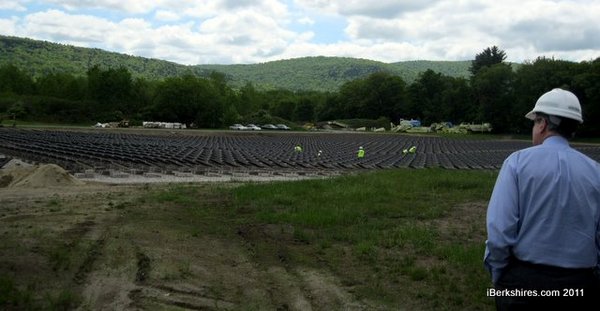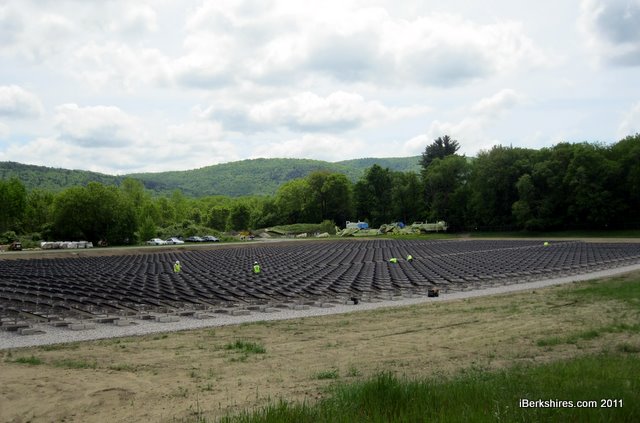
Stimulus Officials Happy With Pittsfield's Solar Project
 Mayor James Ruberto said the city has been aggressively persuing renewable energy projects. |
Simon returned to Pittsfield's wastewater treatment plant Wednesday to check on the state's investment and expressed amazement about the size and the city's push for renewable energy.
"This is magnificent. I didn't know it would be this large," Simon said while looking at the array. "It's great to see that you have something this impressive. It's just row after row after row."
The project includes 7,545 solar panels producing 1.5 megawatts, which accounts for 75 to 90 percent of the plant's energy consumption.
The city's solar array is the biggest one in the state funded with stimulus money and is only behind Western Massachusetts Electric's massive array on former General Electric land for largest overall.
However, those plants will soon be dwarfed by other projects in the state, according to Eric Aubry, who is a project manager with NextAmp — the company that landed the statewide stimulus contract.
"We know the goal of the governor is to create as much renewable energy as we can," Mayor James Ruberto said. "People who say the stimulus doesn't work, they're crazy."
Bruce Collingwood, the city's commissioner of utilities, said the stimulus allowed the city to build a project it would otherwise not have afforded. The money saved can now go to other projects without affecting the tax rates, he said.
The city has made a tremendous push to invest grant money into energy efficiency and is embarking on all three models of solar panel projects, Collingwood said. The wastewater plant is municipal-owned, the General Electric site is privately owned by WMECo, and the city is working out an agreement for an array to go on leased land, he said.
 Of 12 solar projects at wastewater treatment plants to received stimulus funding, the city's is the largest. |
"You really got out in front of it tremendously," Simon said. "We can't continue to rely on oil even if we could afford the high prices."
Compared to other wastewater projects Simon has visited, the city's array is less noticeable, he said.
"I'm really impressed that it fits right into the landscape. With others you kind of just come upon them," Simon said. "I think it is well-engineered and well-executed."
Simon said that a similar project in Milton is linked up to a website that schools use to teach about green energy; Collingwood said he aims to do that here, too.
"This will have the capability," Collingwood said. "I want to go there."
The city's project is expected to be online at the end of the summer or early fall, Aubry said. There are still 675 panels to be installed as well as some transformer and relay work left, he said.
In part of the American Recovery and Reinvestment act the state awarded a contract of about $20 million to NextAmp to install solar panel arrays at wastewater treatment plants. That company more than doubled its staff because of it and even started a whole new division to manage the sites, Aubry said.
















